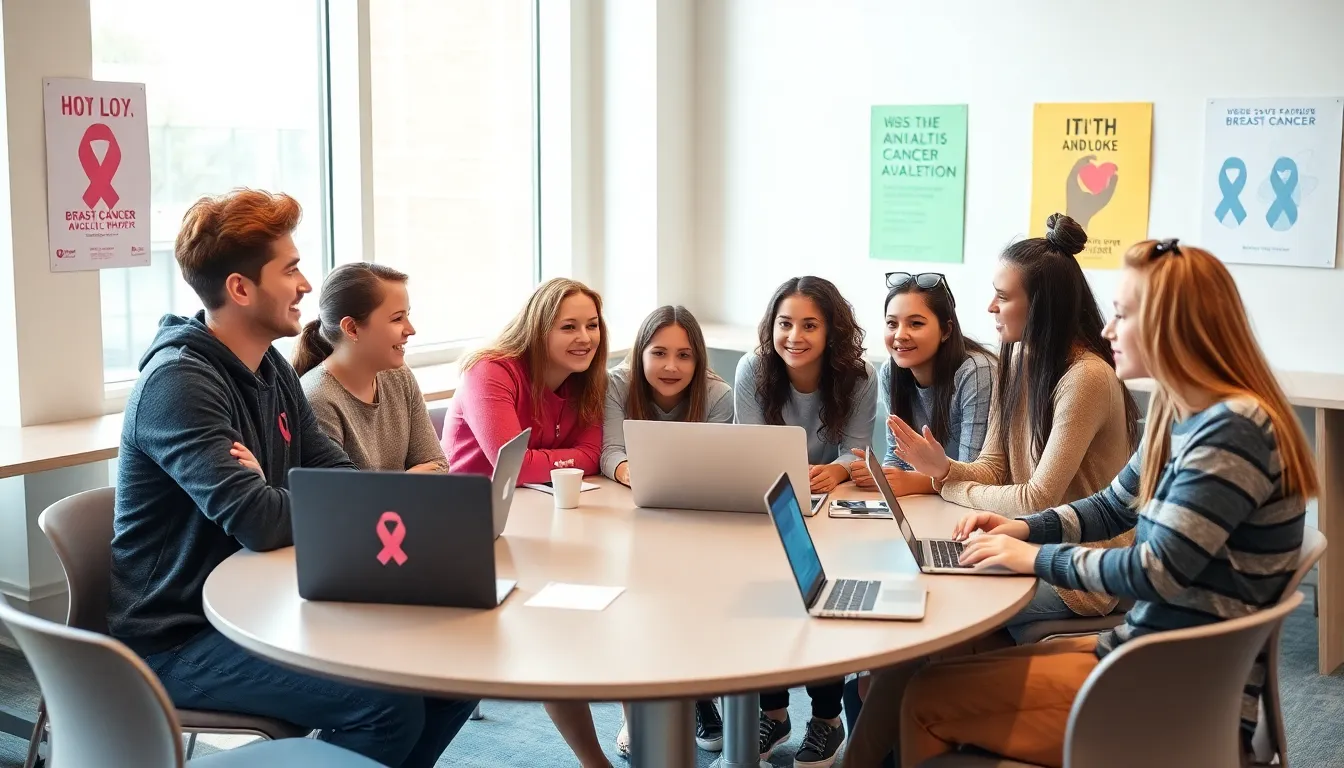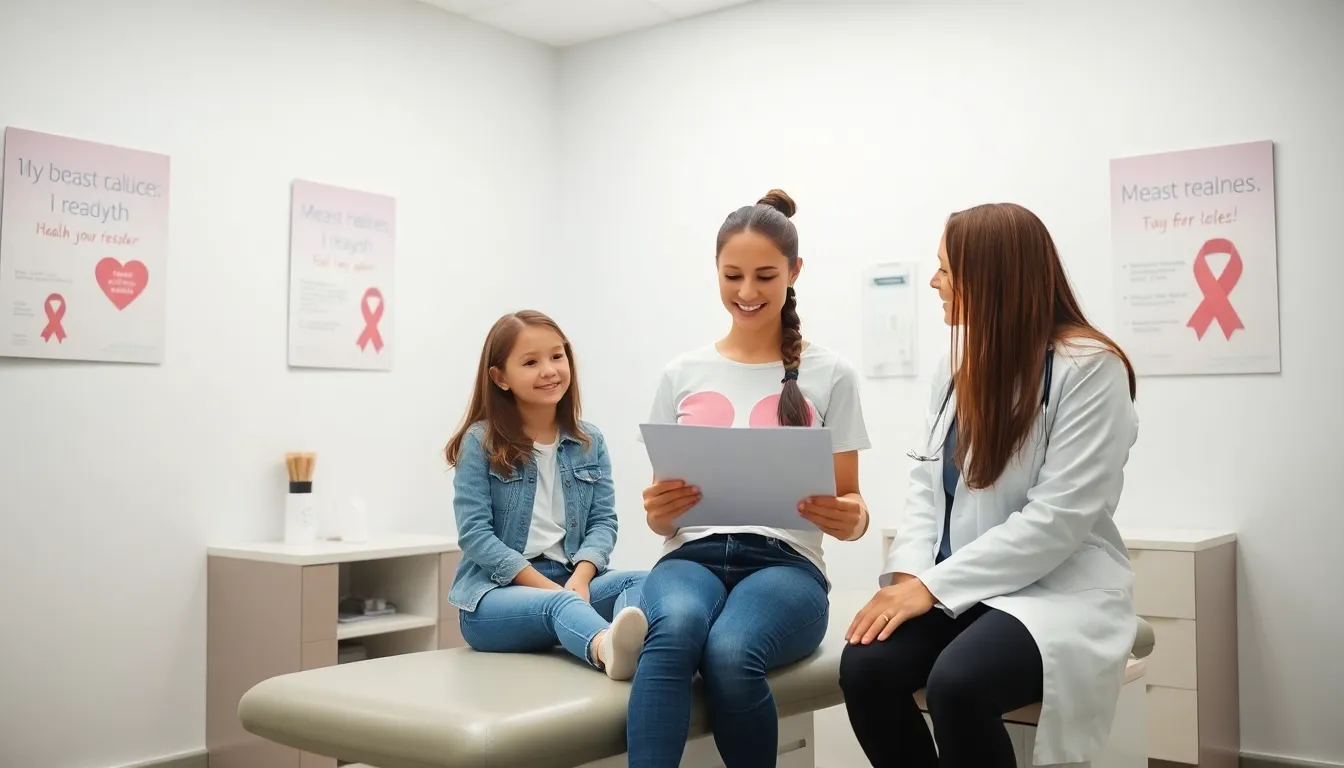Table of Contents
ToggleBreast cancer, it’s a term most often associated with adults, but what about teenagers? You might think, ‘Isn’t that an old person’s disease?’ Well, think again. Though relatively rare, breast cancer can and does affect teenagers. It’s important to separate fact from fiction, and in this text, we’re diving deep into the world of teen breast cancer. With a blend of information and a touch of humor to keep things light, let’s get ready to bust some myths and empower those curious minds.
Understanding Breast Cancer in Teenagers

Breast cancer is widely recognized as a disease that predominantly affects women, particularly those over the age of 40. But, when it comes to teenagers, the situation is more complex than it seems. While it’s true that breast cancer rates in teens are quite low, they are not non-existent. The medical community is increasingly aware of breast cancer in adolescents, which highlights the importance of understanding this issue.
Adolescents possess unique biology, and their bodies are still developing. This development can influence how breast cancer manifests, if it appears at all. In cases where teenagers do develop breast cancer, it often presents itself differently than in adults. For instance, the types of tumors may vary, and the response to treatment can differ as well. It’s crucial for both teens and their guardians to remain vigilant about any unusual changes in the body.
Awareness about breast cancer doesn’t just empower teens: it fosters an environment of open conversation about health. When we raise awareness, we equip young people with the tools to address their health confidently.
Risk Factors for Breast Cancer in Teens
The realization that teenagers can get breast cancer might shake your foundational beliefs about the disease. So, what exactly are the risk factors?
Genetic Predisposition: Family history plays a critical role in cancer development. If a close relative has had breast cancer, there’s a chance that genetic mutations, like BRCA1 and BRCA2, may be passed down.
Hormonal Changes: During puberty, the body undergoes significant hormonal changes, and some studies suggest this might impact breast tissue. These fluctuations in hormone levels can sometimes create an environment conducive to cancer development.
Environmental Factors: Exposure to certain chemicals and radiation can also amplify the risk. It’s essential to consider the environments in which teenagers find themselves, this includes everything from household products to pollution.
Lifestyle Choices: While diet and exercise are more relevant to older demographics, poor nutrition and lack of physical activity can also influence health outcomes. A balanced diet and active lifestyle are as beneficial for teens as they are for adults.
Symptoms and Warning Signs
Just like with adults, recognizing the symptoms of breast cancer early can make a significant difference. For teenagers, being aware of the signs is crucial.
Lumps: A lump in the breast or underarm area is often the most common initial symptom. Teens are encouraged to perform regular self-exams so they can identify any changes.
Breast Changes: Pay attention to any noticeable changes in the breast, such as swelling, redness, or unusual discharge. These can be red flags that shouldn’t be ignored.
Pain: While breast pain doesn’t automatically signal cancer, persistent discomfort should prompt a visit to a healthcare professional.
Skin Changes: Changes in the skin’s texture or appearance, such as dimpling, can be alarming. It’s essential to have these signs examined by a medical professional.
Diagnosis and Screening Recommendations
Diagnosis plays a vital role in addressing breast cancer among teenagers. Once suspicions arise, several methods are employed to confirm whether a teen has breast cancer.
Clinical Breast Exams: Healthcare providers conduct thorough exams to check for any abnormalities. Regular check-ups can significantly aid in early detection.
Imaging Tests: If a lump or unusual change is detected, doctors may recommend imaging tests, such as mammograms or ultrasounds. While mammograms are standard for older women, adjustments may be made for younger patients if warranted.
Biopsy: If suspicious tissue is detected, a biopsy is often the definitive test. During a biopsy, a small sample of tissue is removed for detailed analysis, this step is vital for accurate diagnosis.
Importance of Awareness: Although formal screening guidelines for teens do not exist, being attentive to any changes and seeking medical advice can help catch any potential issues early.
Treatment Options for Breast Cancer in Adolescents
When it comes to treating breast cancer in teenagers, the approach may be a bit different compared to adults. Adolescent treatment plans must consider both the effectiveness and the unique needs of younger patients.
Surgery: If a tumor is detected, surgical options often include lumpectomy or mastectomy, depending on the size and stage of the cancer. Surgeons work to preserve as much healthy tissue as possible while addressing the cancerous areas.
Chemotherapy: For more aggressive forms of breast cancer, chemotherapy may be necessary. While the thought of undergoing chemotherapy can be daunting, advancements in medicine have helped manage side effects more effectively today.
Radiation Therapy: Radiation may also be utilized, particularly after surgery to eliminate any remaining cancer cells.
Supportive Care: Psychological and emotional support is just as crucial as physical treatment. Engaging with a multidisciplinary team helps ensure that all aspects of a teenager’s wellbeing are addressed.
Psychosocial Impact on Teenagers with Breast Cancer
Battling breast cancer as a teenager presents unique challenges. The psychosocial impact can spread far and wide, affecting the teen’s mental health, social interactions, and overall quality of life.
Emotional Toll: The diagnosis can be overwhelming. Teens may feel scared, isolated, or even angry. It’s vital to offer spaces for them to express these emotions without judgment.
Social Dynamics: Experiencing cancer can alter friendships. Some teens may withdraw, while others might receive tremendous support from their peers. Open dialogue about their experiences can help navigate these social changes.
Resources and Support Groups: Many organizations provide support specifically for adolescents battling breast cancer. Encouraging teens to engage with peers who share similar experiences can foster understanding and fortitude.
Preventive Measures and Awareness
While it may seem daunting, preventive measures for breast cancer aren’t only for adults: teens can take charge, too. Raising awareness is crucial.
Self-Exams: Encouraging young individuals to perform regular breast self-exams empowers them in understanding their bodies. Knowledge is power.
Healthy Lifestyle Choices: Emphasizing a balanced diet, regular exercise, and limited exposure to harmful substances can contribute to overall health and potentially lower cancer risk.
Education and Advocacy: Schools and communities should focus on health education programs tailored to young audiences. Educators can help discussions that inform students about breast cancer and its implications.





